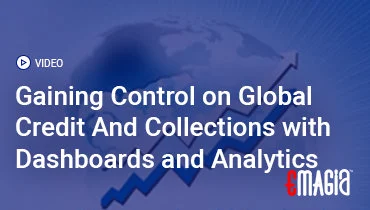A Comprehensive Guide for Modern Business Leaders
In the complex world of business, where financial transactions flow like a fast-moving river, keeping track of every single dollar is not just good practice—it’s absolutely essential. This is the very essence of account reconciliation. It’s the process that acts as the bedrock of sound financial management, ensuring that every financial record is accurate, consistent, and, most importantly, trustworthy. Without this crucial step, a business is essentially navigating its finances blindfolded, leaving itself vulnerable to errors, fraud, and poor decision-making. This extensive guide will explore every facet of why a robust reconciliation process is not just an option, but a mandatory pillar for any organization aiming for sustained success.
We’ll dive deep into what it truly means to reconcile accounts and how this seemingly simple task holds the key to a company’s financial health. We will cover the different types of reconciliations, the challenges faced, and the best practices for a seamless workflow. By the end, you’ll have a clear understanding of why this process is the heartbeat of accurate financial reporting and why neglecting it can have catastrophic consequences.
The Foundational Role of Reconciliation in Accounting
At its core, reconciliation meaning accounting is about a simple but powerful concept: proving that two sets of financial records agree. Think of it as a quality control check for your company’s finances. You have your internal records, such as your general ledger, and then you have external records, like a bank statement or a vendor’s invoice. The goal of the process is to compare these two sets of data line by line to ensure they match perfectly. If they don’t, you need to find out why. This is how you define reconciliation accounting in its most basic form.
This process is far from a mere clerical chore; it is a fundamental control mechanism. It provides assurance that every dollar entering and leaving the business is accounted for and correctly categorized. A solid understanding of what are reconciliations is the first step toward building a resilient financial system that can withstand scrutiny from auditors, investors, and regulators. The process confirms the integrity of your books, which in turn, forms the basis for all financial statements and reports.
Unveiling the Critical Benefits of Reconciling Financial Accounts
The importance of account reconciliation extends far beyond just matching numbers. It has a direct impact on almost every aspect of a business, from risk management to strategic planning. When you reconcile definition accounting becomes a verb that means to secure your financial future. Let’s explore the key benefits.
Ensuring Financial Accuracy and Reliability
Inaccurate financial records are like a ticking time bomb. They lead to incorrect financial statements, which can cause you to make poor business decisions. Regular reconciling financial data guarantees that your balance sheets, income statements, and cash flow reports are a true and fair representation of your company’s financial position. This level of accuracy is what gives management the confidence to trust the numbers they are using to guide the business.
The First Line of Defense Against Fraud
One of the most compelling reasons to prioritize reconciliation is its role in fraud detection and prevention. By comparing internal and external records, you can quickly spot unauthorized transactions, inflated expense reports, or other fraudulent activities. A company that regularly performs account reconciliations makes it much harder for fraudsters to operate. This is a crucial internal control that safeguards a company’s assets and reputation.
Facilitating Better Business Decisions
Imagine trying to make a major investment decision or plan for future growth with a flawed view of your cash flow. It’s a recipe for disaster. Accurate and timely reconciliation provides management with the reliable data they need for strategic decision-making. Whether it’s assessing liquidity, forecasting revenue, or managing expenses, a clear picture of your finances is non-negotiable. This process gives you the confidence that the numbers you are relying on are sound.
Achieving Audit Readiness and Regulatory Compliance
For any business, especially publicly-traded companies, audits are an inevitable part of life. A well-documented and consistent reconciliation process is a key element of a strong internal control system, which auditors love to see. By regularly performing this function, you are not only preparing for the audit but also demonstrating your commitment to transparency and governance. This adherence to best practices helps you meet regulatory requirements and avoid costly penalties, solidifying the reconciliation meaning in accounting as a benchmark for integrity.
Key Types of Account Reconciliation
The term account reconciliation is a broad one. It applies to a variety of accounts, each with its own specific nuances. Understanding the different types helps businesses to implement a comprehensive strategy. Here are some of the most common types of reconciliations you will encounter.
What’s Bank Reconciliation?
The most common form of reconciliation is bank reconciliation meaning. This process involves comparing a company’s cash balance in its general ledger with the balance on its bank statement. Discrepancies often arise from timing differences, such as outstanding checks or deposits in transit. It’s a vital monthly exercise that confirms your cash position and helps you spot bank errors or unauthorized withdrawals. A regular bank reconciliation statement is a powerful tool for maintaining cash control.
Accounts Receivable and Accounts Payable Reconciliation
For a business to operate smoothly, it must keep track of what it is owed (receivables) and what it owes (payables). This involves matching your accounts receivable sub-ledger with the general ledger. Similarly, accounts payable reconciliation ensures that the amounts you owe your vendors match their statements. This type of reconcile accounts process is vital for managing cash flow and maintaining good relationships with your customers and suppliers.
Intercompany Reconciliation
In larger corporations with multiple subsidiaries, transactions often occur between different entities. This creates the need for intercompany reconciliation. The process ensures that all intercompany transactions are properly accounted for and eliminated during the consolidation process, preventing misstatements in the final financial reports. It’s a complex but necessary part of group accounting.
Credit Card Reconciliation
With businesses using corporate credit cards for a wide range of expenses, reconciling these accounts is a daily or weekly necessity. This process involves matching credit card statements with expense reports and receipts to ensure every charge is valid and properly categorized. This helps to catch any fraudulent charges or data entry errors, contributing to overall financial health.
The Step-by-Step Process for Reconciling Accounts
While the process may vary slightly depending on the type of account, a general framework can be followed to ensure efficiency and accuracy. This framework provides a clear path for anyone who needs to reconcile account data.
1. Gather All Relevant Records: The first step is to collect all the necessary documents. For a bank reconciliation, this would include your bank statement, the general ledger, and any other relevant financial records. This step is about preparation and organization, setting the stage for a smooth process.
2. Compare Transactions and Identify Discrepancies: This is the heart of the reconciliation process. You’ll go through your internal records and compare them to the external statement. The goal is to match every transaction. As you do this, you’ll note any items that appear on one record but not the other. This is a critical point where you are truly putting the accounting term reconcile into action.
3. Investigate and Adjust Discrepancies: Once you have a list of outstanding items, you must investigate each one. Common reasons include:
* Timing differences: A check you wrote hasn’t been cashed yet.
* Bank errors: A deposit was recorded incorrectly.
* Data entry mistakes: A typo in your general ledger.
* Fraud: An unauthorized transaction has occurred.
Once the reason is determined, you will make the necessary adjustments in your internal records to ensure the balances match.
4. Documentation and Approval: A reconciliation is not complete until it is properly documented and reviewed. You should keep a record of all discrepancies and the adjustments made to resolve them. This documentation is crucial for audit trails and for future reference. A second pair of eyes to review and approve the reconciliation is a best practice that adds another layer of internal control, ensuring that the account reconciled meaning is one of integrity and accuracy.
Overcoming Common Challenges in Reconciling Financial Records
While the process is straightforward in theory, it can be fraught with challenges in practice, especially in growing businesses. Understanding these hurdles is the first step toward overcoming them. Here we look at some of the most common issues that can complicate the reconciliation process.
The Pain of Manual Processes and High Transaction Volumes
For businesses with a high volume of transactions, manual reconciliation can be an incredibly time-consuming and error-prone task. Sifting through countless receipts, invoices, and bank statements with a spreadsheet is a recipe for missed discrepancies and employee burnout. This is where the old-school approach of define reconcile accounting by hand truly shows its limitations. The sheer scale of the work makes human error an almost unavoidable factor.
Data Silos and Inconsistent Formats
Modern businesses often use multiple software systems for different functions, from sales to payroll. This can create a significant challenge when data needs to be pulled from various sources to perform a single reconciliation. Inconsistent data formats and a lack of integration can make the process incredibly difficult, as finance teams spend more time on data gathering and normalization than on the actual reconciliation itself.
Timing Differences and Unrecorded Transactions
Timing differences are a classic issue in reconciliation. A payment you made might be recorded in your general ledger today, but it won’t appear on the bank statement for several days. Likewise, bank fees or interest earned may appear on the statement without a corresponding entry in your books. These small but frequent discrepancies can make it challenging to get the two records to match, and require careful attention to detail to resolve.
The Modern Approach to Reconciliation: Automation and Technology
In today’s fast-paced business environment, relying solely on manual processes for reconcile account tasks is no longer sustainable. The rise of automation and specialized software has transformed the way businesses approach this critical function. This shift has not only improved efficiency but has also fundamentally changed the way we view the reconcilement definition in a digital age.
Automating the Matching Process
Reconciliation software can automatically connect to your bank accounts, credit cards, and other financial systems. It can then automatically match transactions based on predefined rules, drastically reducing the time and effort required for the process. This frees up finance professionals to focus on investigating the more complex discrepancies, rather than on tedious data entry and comparison. This is a game-changer for businesses dealing with high volumes of transactions.
Real-Time Visibility and Reporting
Modern reconciliation tools provide a real-time view of your financial data. Instead of waiting until the end of the month for a bank statement, you can see transactions as they happen. This real-time visibility allows you to catch errors or potential fraud much sooner, giving you a much tighter grip on your company’s finances. It moves the reconciliation in accounting definition from a periodic task to a continuous process.
Enhancing Audit Trails and Compliance
Automated systems maintain a complete and detailed audit trail of every reconciliation. They document every transaction, every adjustment, and every approval, providing a clear record for auditors. This level of transparency not only makes audits smoother but also strengthens your internal controls and ensures you are in full compliance with all regulatory requirements. It makes the definition of reconciliation accounting synonymous with a bulletproof system of financial checks and balances.
The Broader Meaning of Reconciliation in Finance
While we have focused on the accounting side, the reconciliation in finance meaning extends to the very heart of a company’s strategic health. It is the process that gives financial leaders the confidence to make forward-looking decisions. It’s about more than just numbers; it’s about trust.
The Reconciliation of Trust
When financial statements are clean, accurate, and supported by a robust reconciliation process, it builds trust. It builds trust with investors who want to be sure their money is being handled responsibly. It builds trust with lenders who are assessing your creditworthiness. It builds trust with stakeholders who are relying on your reports to make decisions. The phrase reconciled accounting meaning is really about the reconciliation of a company’s financial narrative with its actual financial reality.
A Tool for Forecasting and Strategic Planning
Accurate historical data is the foundation of effective forecasting. By ensuring your past records are perfectly reconciled, you can create more reliable models for future growth, cash flow, and resource allocation. It allows a business to move from reactive financial management to proactive strategic planning, positioning itself for long-term success. This is a sophisticated application of the definition of reconciling data.
How Emagia Elevates Account Reconciliation to a Strategic Advantage
In a world where financial processes are more complex than ever, companies need more than just a basic solution—they need a partner that can transform reconciliation from a manual headache into a strategic asset. This is where Emagia steps in. Emagia’s intelligent automation platform is designed to revolutionize the way businesses handle financial operations, including the critical process of reconciliation.
By leveraging advanced technologies like AI and machine learning, Emagia automates the entire reconciliation lifecycle. The platform intelligently extracts and standardizes data from disparate sources, automatically matches transactions with a high degree of accuracy, and flags exceptions for human review. This drastically reduces the time spent on manual tasks, allowing finance teams to shift their focus from data entry to high-value analysis and strategic initiatives. The result is faster financial closes, a significant reduction in errors, and a clear, real-time view of cash flow. Emagia helps businesses to move beyond a simple reconcilement definition and embrace a new era of intelligent financial management, where every transaction is accounted for and every decision is backed by perfect data.
FAQs on Account Reconciliation in Financial Management
What is reconciliation in accounting?
In simple terms, what is reconciliation in accounting is the process of comparing two sets of financial records to ensure they match. For example, comparing a company’s internal cash balance to its bank statement to identify and resolve any discrepancies.
Why is reconciliation important?
Reconciliation is important because it ensures the accuracy of financial records, helps detect errors and fraud, provides a clear picture of a company’s financial health, and is a key requirement for audits and compliance. It is a foundational internal control.
What does reconciliation mean in accounting?
Reconciliation meaning in accounting refers to the act of verifying that the debits and credits in your internal general ledger align perfectly with the transactions on an external statement, like a bank statement or a vendor’s invoice.
What’s bank reconciliation?
What’s bank reconciliation is the process of matching the cash balance on a company’s bank statement with the cash balance in its general ledger. This is a critical step for identifying outstanding checks, deposits in transit, and bank fees that have not yet been recorded.
How often should accounts be reconciled?
While the frequency can vary, it is a best practice for most businesses to reconcile accounts at least monthly. For high-volume accounts, a more frequent, or even daily, reconciliation is recommended to catch errors and fraudulent activity sooner.
What does recon in accounting mean?
Recon in accounting is a commonly used shorthand for reconciliation in accounting, referring to the process of comparing financial records to ensure accuracy and consistency.
What are reconciliations?
Reconciliations are the various processes of comparing different financial records to verify their accuracy. This includes, but is not limited to, bank reconciliations, accounts payable and receivable reconciliations, and intercompany reconciliations.
What is account reconcilement?
Account reconcilement is another term used to describe the process of account reconciliation. It is the act of bringing two sets of financial records into agreement by identifying and resolving any differences.



